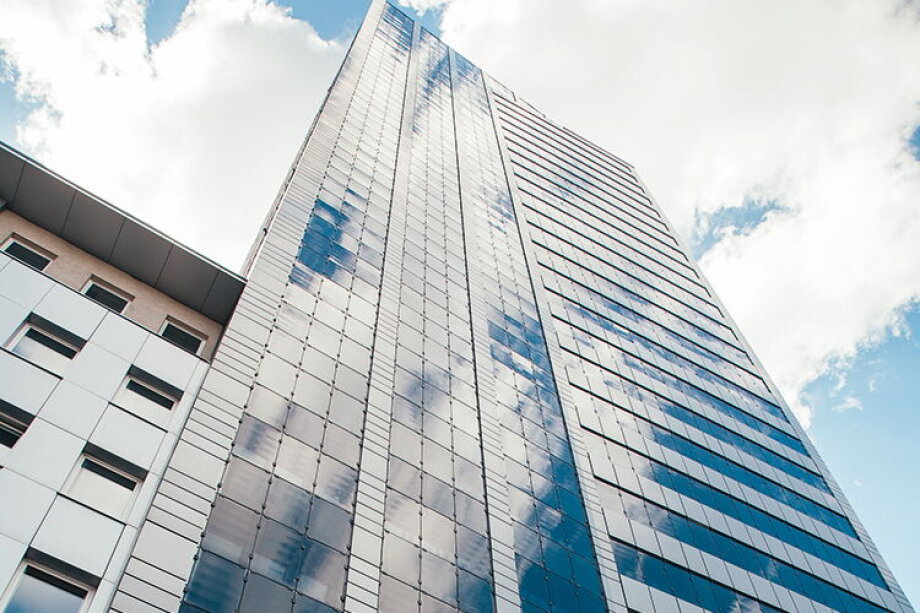Warsaw embraces the office rental market revolution
The office market in Poland’s capital stands out as cities globally struggle with declining demand. By Anna Rzhevkina

The office market in Poland’s capital stands out as cities globally struggle with declining demand. By Anna Rzhevkina

The office market in Warsaw has been growing dynamically in recent years as more international companies choose the Polish capital for their business activities. According to a recent report by a consulting company Kearney, Poland has ranked second in Europe and 13th globally in terms of attracting investments in modern business services, thanks to the high digital competencies of employees and attractive labor costs.
On the other hand, the demand for office real estate is projected to decrease globally due to the shift towards remote and hybrid work. McKinsey revealed that office attendance in major cities across the globe has stabilized at 30% below the pre-pandemic norm. By 2030, McKinsey anticipates a 13% decline in office attendance in these cities compared to 2019 in a moderate scenario.
Major cities worldwide, including London, Munich, and Paris, are grappling with challenges, and Warsaw is no exception. Daniel Czarnecki, Head of Office Agency - Landlord Representation at the real estate services provider Savills, stated that in 2020-2021, demand significantly dropped, oscillating between 600,000-650,000 square meters. In 2022, as businesses adapted to the new reality, demand rebounded, reaching 860,100 square meters. However, in the first half of this year, it has plummeted by 32% year-on-year to 325,700 square meters.
Czarnecki specified that prolonged inflation and the revolution in office space usage, with a preference for smaller spaces, are influencing this decline in demand. He further explained that most companies have adopted a hybrid work model in Warsaw. Working from home a day or two per week is not only the norm but often a requirement. He added that the situation across the eastern border may be one of the reasons why, as in the case of the pandemic, tenants are holding back on further decisions.
Vacancy rates vary significantly among the city districts. Over the past two years, the vacancy rate has steadily decreased in central zones. In contrast, it has been on the rise outside the city center. For instance, in Służewiec, which is the largest office district in Poland and offers more than 1 million square meters of office space, the vacancy rate grew to 20.6% at the end of June, according to real estate agency AXI IMMO. In Warsaw, the average vacancy rate outside the center was 11.4%, whereas, in central zones, it was 9.9%.
Jakub Potocki, Associate Director, Office Leasing Department, AXI IMMO, said landlords hold significant bargaining power due to high demand, especially for modern office space in the center. This status quo has made it challenging for tenants to negotiate lower rents, reduce other costs, or secure appealing incentives like rent-free periods. At the end of the second quarter, asking rents ranged from €18 to €27.50 per square meter in prime office buildings in the city center and started from €10 per square meter outside the center.
Czarnecki from Savills also highlighted that since 2020, the majority of demand has been concentrated in the center. He expects this trend to continue, despite high prices that may occasionally exceed €27 per square meter for the most attractive office spaces.
Warsaw is the largest office market in Poland, followed by Kraków, Wrocław, and the Tri-City. At the end of this year's second quarter, the total modern office stock in the eight major regional markets amounted to 6,513,800 square meters, a recent report by the Polish Chamber of Commercial Real Estate (PINK) showed. The new supply reached 48,100 square meters of office space. Interestingly, the largest projects were outside the capital: Nowy Rynek E in Poznan and Brama Oławska in Wroclaw.
Predictably, the regions' average vacancy rate is higher than Warsaw's. By the end of the second quarter, it had risen to 17.1%, indicating a 1.9 percentage point increase from a year ago. However, there are cities with notably less available space when compared to the capital. A prime example is Szczecin, boasting a vacancy rate of merely 4.4%. In contrast, Łódź stands out with a vacancy rate of 23.4%, the highest among the regional markets.
Can older buildings stay attractive?
As more modern office space expands rapidly across Poland, both in Warsaw and the regions, a question arises: can aging office blocks maintain their appeal? Tenants are becoming increasingly discerning, as they not only require facilities crucial for running their businesses but also consider sustainability criteria. Czarnecki emphasized that tenants, particularly corporations obligated to reduce their CO2 emissions in the upcoming years, are eager to select the most contemporary properties boasting certifications like BREEAM, LEED, or WELL. These certificates confirm that buildings create a healthy environment for employees and are eco-friendly.
Notably, Warsaw has one of Europe's highest levels of green-certified buildings. More than two-thirds of buildings in the Polish capital possess BREEAM, LEED, or WELL certificates. Czarnecki highlighted that tenants are typically eager to pay a premium for such spaces, considering that these properties help reduce service charges, which have recently been an increasing burden for tenants.
In the current year, demand for buildings constructed after 2015 constituted 47% of the total demand. However, does this imply that older buildings lack competitiveness? Not necessarily, as the escalating costs of conducting business prompt companies, especially small and medium-sized enterprises, to seek more cost-effective office spaces. "An important advantage of older buildings is their potentially more appealing location and lower costs, factors that are likely to attract tenants when the conditions are suitable," Czarnecki explained. He stressed that the key is to "make the right decision at the right time" to ensure the building is attractive to potential tenants.
However, Warsaw has witnessed several cases in which companies have made drastic decisions to demolish entire buildings that no longer meet their standards, opting to replace them with new structures. One notable example is the demolition of the iconic nearly 100-meter PZU tower, which used to be one of the most modern constructions in Poland, in 2000. The insurance company replaced it with a new 140-meter-high skyscraper, emphasizing that the new building is designed to cater to the needs of employees and align with an ESG strategy.
Another example is the demolition of Atrium International, less than three decades after its completion. Critics have pointed out that the building was relatively young and fully functional, despite being abandoned for an extended period. The new project - Upper One skyscraper - will consist of two parts - a 131-meter-high office building and a hotel section, with completion scheduled for 2026.
Warsaw seems to be well-prepared for changes in the office market brought about by the increasing popularity of remote work compared to other major cities. Despite ongoing new completions, the vacancy rate remains stable, underscoring the continued demand for new office spaces.
Moreover, as the global demand for flexible office solutions continues to rise, Warsaw holds a strategic advantage due to its skilled workforce and attractive location. According to Czarnecki, the saturation rate of flexible office space in Poland's primary office hubs is around 2.6%, with Warsaw having the highest rate at 3%. This rate is still notably lower than Western Europe's, suggesting substantial potential for expanding this type of service in Poland.

Daniel Czarnecki, Head of Office Agency - Landlord Representation at Savills
How have inflation and the rising costs of running a business impacted the office market so far, and what trends do you expect in the future?
Last year's record inflation, not only in Poland but also in the Eurozone, contributed to significant rises, whether in the form of rent indexation (over 8% inflation in the Eurozone in 2022, which will impact most Polish leases) or service charges - here, according to our forecasts from early 2023, potential rises could reach 30%-60%. Currently, charges exceeding PLN 35 per square meter a month are no exception. Furthermore, tenants are facing another indexation based on inflation in the Eurozone, which, according to Oxford Economics analysis, could reach over 5%. The situation should stabilize in 2025. Higher inflation translates into higher fit-out costs. In recent years, tenants have been used to receiving a finished office to a high standard. At current prices, five-year contracts, which were the norm in the market some time ago, make it difficult for landlords to pin down their budgets and reduce the profitability of the investment. Therefore, to compensate for the high expenses incurred by landlords, we see contracts being extended to, for example, seven years, although ten-year contracts are appearing on the market.
What are the recent projects in the market worth keeping an eye on?
Some of the most exciting projects undoubtedly include those in the city center. New projects such as Upper One, The Bridge, or Towarowa 22 will add to the local skyline in the coming years. Outside the center, the most interesting projects include the renovation of an old factory in Praga, near the East Railway Station, where the mixed-use Drucianka project is being developed. In addition, there is a trend towards the refurbishment of older properties. Owners of B-class buildings understand current trends and are focusing on modernizing spaces so that the leased space and a high standard of finish can help companies achieve their climate neutrality goals. Examples of modernization in recent years include The HOP in the City Center or Diuna at Służewiec. The Saski Crescent building is currently being modernized, and there are also plans to modernize over 30,000 square meters at Warta Tower.